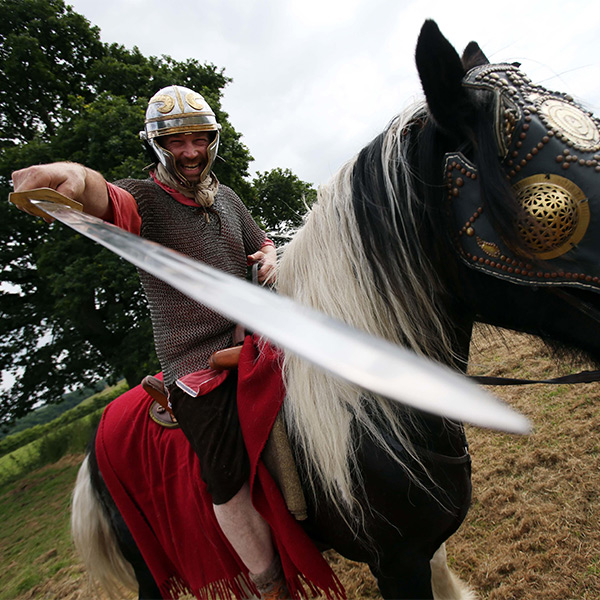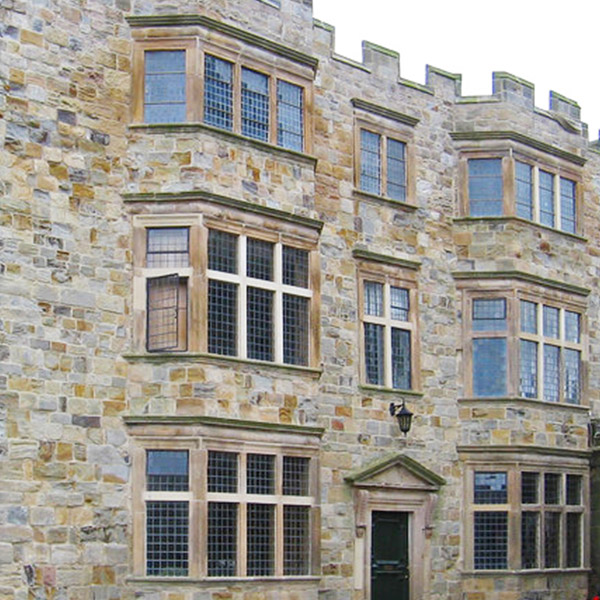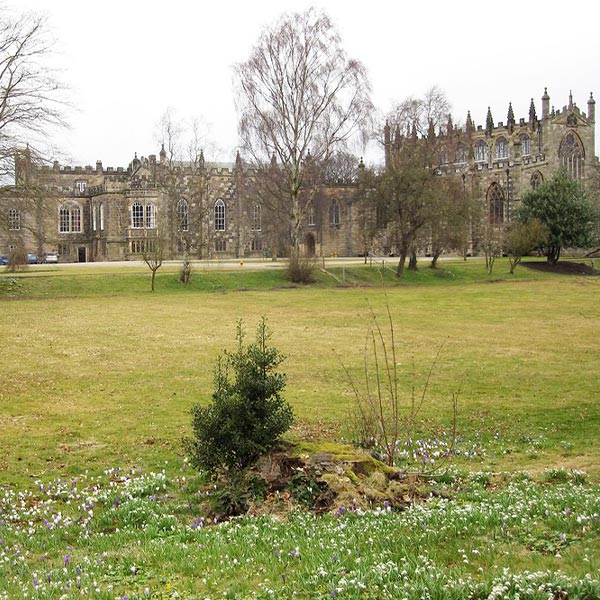It is thought that the Romans originally had a look-out post on the site of the current Bishop’s Palace. However, their large cavalry fort – Vinovia – was built at Binchester around 79AD. Located about a mile to the North of our Town Centre, this was a cavalry supply station for the Roman Wall. At its height it was a large facility and housed a large garrison. The Fort will have provided the base for a major settlement in Binchester.
A mile from the town centre are the remains of Binchester Roman Fort, home to the best preserved Roman bath house in Britain. It is currently being excavated and there are plans to make the site a major tourist attraction for those interested in Roman days.
Binchester continued as some form of community for more than five hundred years after Britain ceased to be part of the Roman Empire around 411 AD. Eventually Binchester will have been replaced by Bishop Auckland as the main settlement, when the Prince Bishops established their rural residence there.


It is thought that the Romans originally had a look-out post on the site of the current Bishop’s Palace. However, their large cavalry fort – Vinovia – was built at Binchester around 79AD. Located about a mile to the North of our Town Centre, this was a cavalry supply station for the Roman Wall. At its height it was a large facility and housed a large garrison. The Fort will have provided the base for a major settlement in Binchester.
A mile from the town centre are the remains of Binchester Roman Fort, home to the best preserved Roman bath house in Britain. It is currently being excavated and there are plans to make the site a major tourist attraction for those interested in Roman days.
Binchester continued as some form of community for more than five hundred years after Britain ceased to be part of the Roman Empire around 411 AD. Eventually Binchester will have been replaced by Bishop Auckland as the main settlement, when the Prince Bishops established their rural residence there.

Stonework from the Fort was used in one of the finest examples of early Christian architecture in Northern Europe, the Saxon Church at nearby Escomb. Religion has been a major influence over several hundred years and there are many churches within the Bishop Auckland area.
The earliest known reference to Bishop Auckland itself is as a gift of a Bishop’s borough given to the Bishop of Durham as a gift by King Canute in around 1020. Bishop Auckland is also home to the magnificent Auckland Castle, the official country residence of the Prince Bishops for centuries and still the official home of the Bishop of Durham.
Over hundreds of years, Auckland Castle was occasionally
modified by different Bishops. No doubt they wanted to leave their mark on the buildings. Indeed, St Peter’s Chapel in Auckland Castle is a very rare example of a magnificent private chapel. Surrounding the beautiful Auckland Castle is the Bishop’s Deer Park and 800 acre grounds. The Park has contained during its lifetime, deer, fish ponds, rabbit warrens and wild white cattle.

Stonework from the Fort was used in one of the finest examples of early Christian architecture in Northern Europe, the Saxon Church at nearby Escomb. Religion has been a major influence over several hundred years and there are many churches within the Bishop Auckland area.
The earliest known reference to Bishop Auckland itself is as a gift of a Bishop’s borough given to the Bishop of Durham as a gift by King Canute in around 1020. Bishop Auckland is also home to the magnificent Auckland Castle, the official country residence of the Prince Bishops for centuries and still the official home of the Bishop of Durham.
Over hundreds of years, Auckland Castle was occasionally modified by different Bishops. No doubt they wanted to leave their mark on the buildings. Indeed, St Peter’s Chapel in Auckland Castle is a very rare example of a magnificent private chapel. Surrounding the beautiful Auckland Castle is the Bishop’s Deer Park and 800 acre grounds. The Park has contained during its lifetime, deer, fish ponds, rabbit warrens and wild white cattle.
Today the Castle is the centre of a major regeneration project that is using the history and historic buildings of Bishop Auckland to promote future economic, social and cultural development: The Auckland Project.
During Medieval times, the Bishop of Durham was in a powerful position. A wealthy landowner, the Bishop of Durham had considerable power and influence. He could raise money, create an army, support the King militarily and politically and exert considerable power over the local people. At certain points in history, the Bishop of Durham was the second only to the King in the power he could wield.
As a result of the power vested in the Bishop of Durham’s position, some were warriors who fought in battles for the King. Hence, several have been recorded in history as ‘Prince Bishops’ – and Auckland Castle was their home!
Of course, this power waned over time.
Today the Castle is the centre of a major regeneration project that is using the history and historic buildings of Bishop Auckland to promote future economic, social and cultural development: The Auckland Project.
During Medieval times, the Bishop of Durham was in a powerful position. A wealthy landowner, the Bishop of Durham had considerable power and influence. He could raise money, create an army, support the King militarily and politically and exert considerable power over the local people. At certain points in history, the Bishop of Durham was the second only to the King in the power he could wield.
As a result of the power vested in the Bishop of Durham’s position, some were warriors who fought in battles for the King. Hence, several have been recorded in history as ‘Prince Bishops’ – and Auckland Castle was their home! Of course, this power waned over time.
As you approach County Durham by road, many county boundary signs carry the phrase ‘Land of the Prince Bishops’.
Development in the Market Place and surrounding areas during the Post Medieval period appears to have been strong, particularly during the 17th and 18th Century. During the Medieval period, Bishop Auckland continued to grow. The oldest surviving house in the town is in High Bondgate and was built in the 16th Century. In Fore Bondgate is the Bay Horse pub and it has been on this site since 1530, making it the oldest in the town. It was rebuilt into the current structure in 1898.
At the beginning of the 18th century, Bishop Auckland was a flourishing market town with a market hall, market cross and a mix of more industrial businesses such as tanners, coopers, and yarn manufactures that were supplemented by the local cottage industry.


As you approach County Durham by road, many county boundary signs carry the phrase ‘Land of the Prince Bishops’.
Development in the Market Place and surrounding areas during the Post Medieval period appears to have been strong, particularly during the 17th and 18th Century. During the Medieval period, Bishop Auckland continued to grow. The oldest surviving house in the town is in High Bondgate and was built in the 16th Century. In Fore Bondgate is the Bay Horse pub and it has been on this site since 1530, making it the oldest in the town. It was rebuilt into the current structure in 1898.
At the beginning of the 18th century, Bishop Auckland was a flourishing market town with a market hall, market cross and a mix of more industrial businesses such as tanners, coopers, and yarn manufactures that were supplemented by the local cottage industry.

